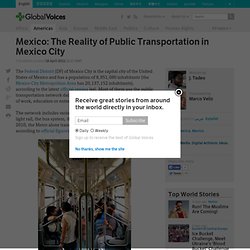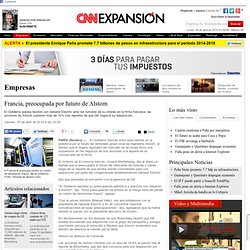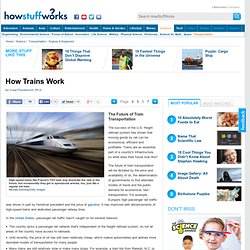

Video: China diseña un tren sin paradas. Urban Age Cities Compared. Where People Live Unlike the more generic measure of ‘net density’ presented in the previous pages, residential urban density measures how many people live in relative proximity in cities, shown below by the number of people living in each square kilometre of a 100 x 100 kilometres urban region.

Residential density is largely driven by topographical constraints, the location of public transport and other infrastructure, but also by each city’s inherited traditions of urban culture and development. Density differs widely, from the high densities of Hong Kong, Mumbai and central areas of Istanbul and Shanghai to the much lower density pattern of London. Johannesburg shows limited areas of higher density set around a downtown that no longer has a residential population, in the midst of a very low-density sprawl. Signs of ageing The age distribution among urban populations reveals a considerable variation that closely mirrors national and global demographic trends. How people travel. Mexico: The Reality of Public Transportation in Mexico City. The Federal District (DF) of Mexico City is the capital city of the United States of Mexico and has a population of 8,851,080 inhabitants (the Mexico City Metropolitan Area has 20,137,152 inhabitants), according to the latest official census [es].

Most of them use the public transportation network daily to travel from their home to their place of work, education or entertainment. The network includes various mediums of transportation such as light rail, the bus system, the Metro and Metrobus, among others. In 2010, the Metro alone transported more than 1,410 million users, according to official figures [es]. Mexico D.F. Metro passengers. But what do its users think about the Metro and Metrobus in Mexico City? Mexico City has several public transportation networks which have proven to be efficient and of great importance for the city. Alstom niega oferta de compra de GE. Francia, preocupada por futuro de Alstom. PARÍS (Reuters) — El Gobierno francés entró este viernes en la polémica por el futuro del atribulado grupo local de ingeniería Alstom, al tiempo que el órgano regulador del mercado de acciones forzó una suspensión en los negocios de sus acciones a la espera de un comunicado de la firma.

El ministro de Economía francés, Arnaud Montebourg, dijo al diario Le Monde que le preocupaba el futuro del fabricante de turbinas y trenes luego de un reporte de que estaba siendo considerado para una adquisición por parte del conglomerado estadounidense General Electric. Dijo que planeaba un encuentro con la gerencia de GE. "El Gobierno expresa su preocupación patriótica y atención con respecto a Alstom", dijo. "Esta preocupación se enfoca en el riesgo serio de perder un centro de decisiones mayor", agregó. El maestro de las bicicletas. Emprendedor y visionario, King Liu es el hombre detrás del milagro ciclista que vive Taiwan en los últimos años.

Cientos de kilómetros de carril bici, eficientes programas de alquiler o festivales dedicados al vehículo de dos ruedas en los que participan miles de ciudadanos son solo una muestra de lo que el empeño de este ingeniero ha conseguido; un sueño que se le ha quedado pequeño y que en los últimos años ha empezado a extenderse por otros rincones del continente asiático. Hace dos décadas el fundador de Giant comenzó a gestar una tarea casi imposible, convertir Taiwan en un paraíso ciclista. Por aquél entonces pocos apostaban por tal idea. The secrets of the world's happiest cities. Two bodyguards trotted behind Enrique Peñalosa, their pistols jostling in holsters.

There was nothing remarkable about that, given his profession – and his locale. Peñalosa was a politician on yet another campaign, and this was Bogotá, a city with a reputation for kidnapping and assassination. What was unusual was this: Peñalosa didn't climb into the armoured SUV. Instead, he hopped on a mountain bike. His bodyguards and I pedalled madly behind, like a throng of teenagers in the wake of a rock star. A few years earlier, this ride would have been a radical and – in the opinion of many Bogotáns – suicidal act. I first saw the Mayor of Happiness work his rhetorical magic back in the spring of 2006. Peñalosa insisted that, like most cities, Bogotá had been left deeply wounded by the 20th century's dual urban legacy: first, the city had been gradually reoriented around cars. Enrique Peñalosa: Why buses represent democracy in action. The Future of Train Transportation"
The success of the U.S. freight railroad system has shown that moving goods by rail can be economical, efficient and profitable.

Trains are an essential part of a country's infrastructure, so what does their future look like? The future of train transportation will be dictated by the price and availability of oil, the determination of governments to find alternate modes of travel and the public demand for economical, fast transportation. For example, Europe's high passenger rail traffic was driven in part by historical precedent and the price of gasoline. It has improved with advancements of high-speed trains and dedicated passenger railway lines. In the United States, passenger rail traffic hasn't caught on for several reasons: However, as oil prices increase, Americans will seek alternative means for long-distance travel, and trains are a good candidate. But retooling U.S. railroads for passenger traffic won't be easy.